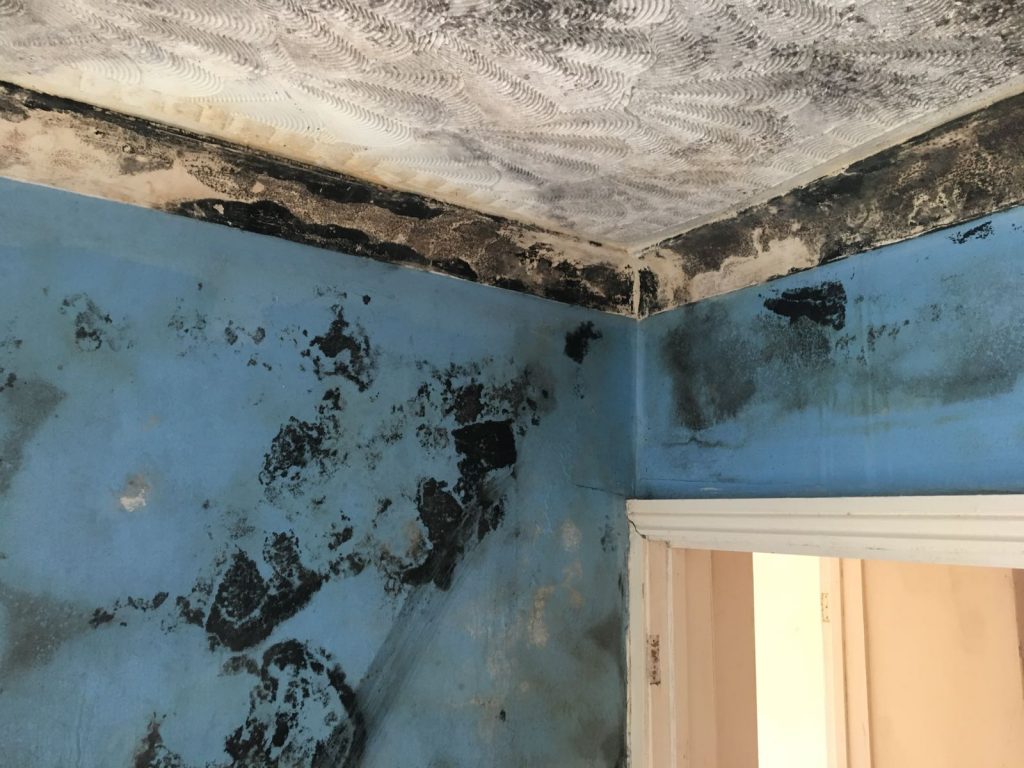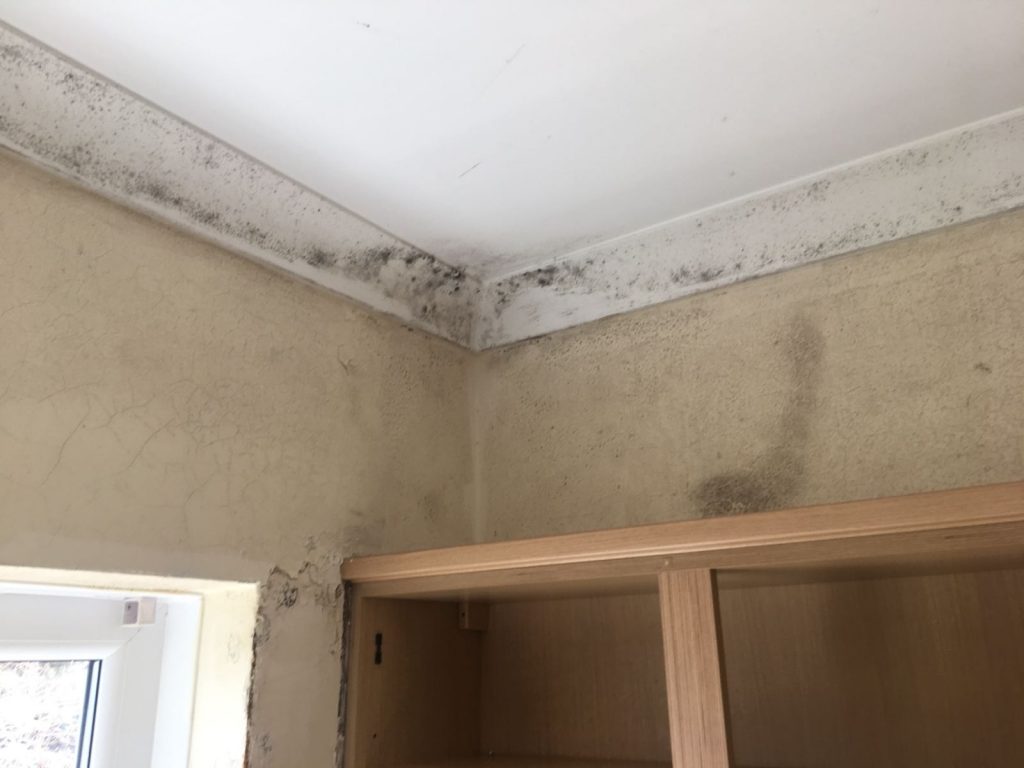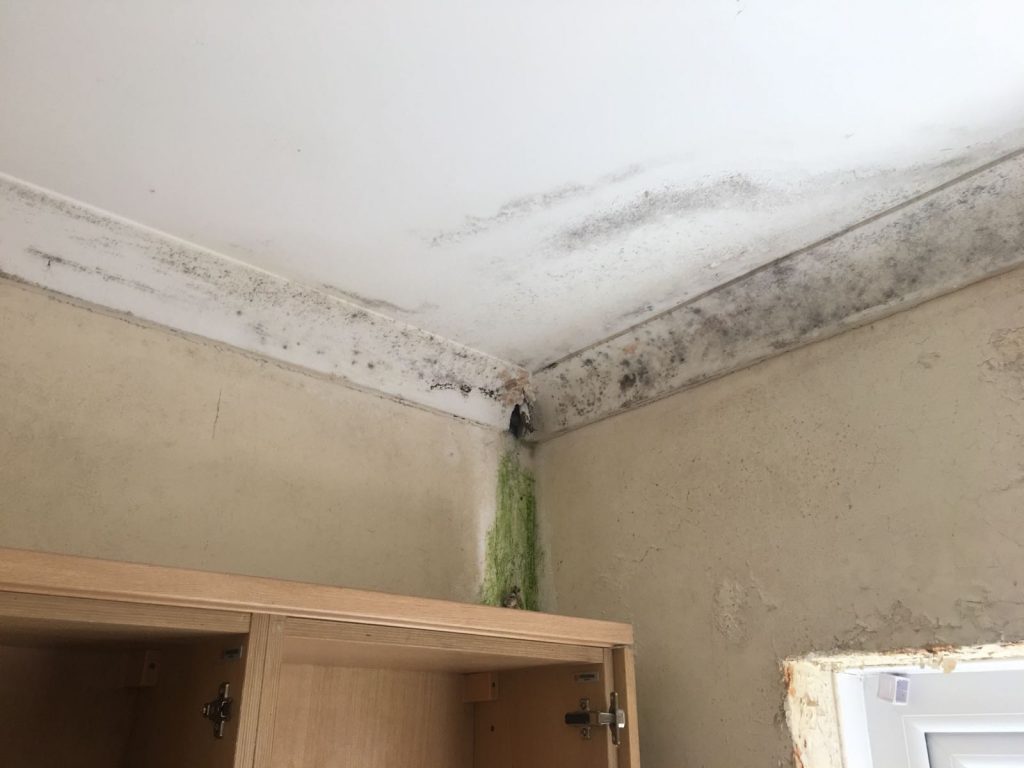Remove failed cavity wall insulation and return your house to a dry, mould free home.
Reasons why your cavity wall insulation has failed
When cavity wall insulation has been installed properly, it can help you to reduce your heating bills and conserve energy. Cavity wall insulation removal is required when this isn’t the case.
It is commonly seen that homes suffer from failed cavity wall insulation, where it has been compromised. Before we discuss the various problems, that could be causing your cavity wall insulation to fail, it’s worth discussing the difference between solid walls and cavity walls and what cavity wall insulation involves.
What if you don’t know if you have cavity wall insulation or not? Generally, if your house was built after the 90’s, it will have insulation installed at point of build. If it is older, its likely your home was not built with insulation and it has been installed since. Houses built after the 1920’s, usually have cavity walls, while those built before the 1920s tend to have solid walls.
Therefore if you are suffering from damp walls and your home was built after 1920, failed cavity wall insulation could be the cause of your damp and cavity wall insulation removal will be needed.
Process Summary
Pre Site Inspection.
Holes drilled over property.
Brick and vents removed just above damp course level to allow the material to be removed.
Compressed air blown through cavity using an agitator whip and directional nozzle to break up material.
Industrial vacuum used to suck insulation out of bottom of cavity.
Bricks and vents replaced.
Material is bagged and removed via our waste carrier licence.
Property is cleaned down.
Photographic evidence from our specialist borescope equipment can be provided on request.




The effects of failed cavity wall insulation on a property interior
Frequently asked questions about cavity wall insulation
Compared to a solid wall, which is just as it sounds – a single solid wall – a cavity wall consists of two walls that have a gap between them, which is what is referred to as a cavity. While the outer leaf, or wall is normally constructed from bricks, the internal leaf is made of concrete block or brick.
If you do not know what kind of walls you have in your property and have no access to information that could explain it, there is an easy way to check. If the exterior of your property has visible brickwork, look at the pattern. A building with cavity walls has bricks that have been assembled so that all the bricks have been laid lengthways. A solid wall, on the other hand, is one where the bricks have been laid with some across, so that the ends are what you see.
Injecting special insulation material into the cavity between the two walls is the most common way to install cavity wall insulation. This is handled by a special firm that starts by drilling holes of around 22mm spaced 1m apart, from the outside and then injecting the special material before sealing over the holes with cement. Although the most common insulation materials used are polystyrene beads and mineral wool, there are occasions when polyurethane foam is used.
This then forms a seal that stops warm air escaping from the house into the cavity and prevents cold air making its way into the property.
That is the theory at least. In practice, the results vary considerably.
- Penetrating Damp – By far the most common reason for failed cavity wall insulation is moisture penetrating through the cavity that can lead to damaged décor, joinery and damp stains in your property.
- Corrosion of Wall Ties – This is when corrosion affects the wall ties that holds the wall leaves together
- Badly Installed Insulation – If insulation hasn’t been fitted properly and there are cold spots where there is no insulation in the cavity.
- Spray Foam Insulation – A newer method of insulation that is often used in retrofit cavities. Although effective in the short term, over time this style has been known to breakdown and shrink.
There are a lot of experts who recommend avoiding retrofit cavity wall insulation because of instances of this cavity wall insulation causing damp. However, that is not strictly true. Yes, filling cavities creates bridges for moisture to travel across. The mistake many make is condemning all insulation material used when not all actually cause problems.
Most commonly, cavity wall insulation types that have been blown mineral wool and expanded polystyrene beads.
Mineral wool is the exact same material you may be familiar with in loft insulation. Tis type of insulation acts like a big sponge inside the cavity. So, when water enters the cavity, it gets absorbed by the insulation, which retains the moisture.
Although that stops the water getting into your home, it also means that you have a cavity packed with wet mineral fibre that will get cold – much colder than the cavity would be if it was empty. The real cavity wall insulation damp issue comes if you live in an area where there is a lot of driven rain or your property has defects that allows a constant stream of penetrating damp to keep it topped up. This constant moisture is able then to penetrate the interior leaf causing damages and won’t dry out.
As a further complication because it is cold and connected to the interior leaf, there is an increased risk of condensation and black mould.
Consider ESP insulation, which consists of many small polystyrene balls and imagine what happens when water pours on the top of the cavity. Where is it going go? It will move around over the balls and make its way down, touching any ball as it drips down and reaches the bottom.
Obviously, there is the possibility that the water will get inside the cavity’s inner edge. However, this should dry out quite easily, as this material does not absorb moisture. The only way it could cause problems with it not drying out properly is if you have building defect or wind-driven rain producing too much moisture for it to deal with., leading to cavity wall insulation polystyrene beads problems.
While both can result in cavity wall insulation damp, you have a much better chance of the wall drying out before anything too serious happens with cavity wall insulation beads.
Whereas with blown fibre or mineral wool has been used and subsequently gotten wet, it is best to speak to an expert about cavity wall insulation removal cost and have your cavity wall insulation removed.
The leaves of the cavity wall in your property are tied together using little metallic strips known as wall ties. As that description suggests, yes, they are crucial. Not only can they be rather expensive to replace, but you can’t tell if they have failed until horizontal cracks appear and they are beyond repair.
You may wonder how failed cavity wall insulation connects to failed wall ties. Well, unless your cavity is packed full of insulation and there is no way for moisture to get in, penetrating damp can cause rust to occur much quicker. When moisture gets trapped in the cavity insulation as illustrated above, that means the wall ties are in constant exposure to the water.
Similarly, to how penetrating damp, badly installed insulation is more of a problem for homes with blown fibre rather than EPS. The reason for this is because of the physical properties of mineral fibre insulation. Think for a second just how rough the inside of cavity walls is with rough surfaces and edges of the metal wall ties, bricks and blocks. When the wall insulation is retrofitted, the blown material catches on all those sharp edges and this can create gaps in the insulation.
The only real way to repair this issue is by finding the gaps and filling these with more.
EPS though can still be badly fitted. When beads are used and not glued, if you ever carry work out on the cavity walls you could end up with a lot of it seeping out. While glued EPS beads are used, because the glue is added just before being pumped in, human errors can cause problems, with voids being created as they are fitted.
Now that you hopefully understand why you have failed cavity wall insulation, you may be wondering what can be done about it. Well, you need to contact a specialist like LMG Home Improvements to find out the cavity wall insulation removal cost and all related cavity wall insulation help.
Our cavity wall insulation extraction service removes mineral fibre like Rockwool and whitewool. We can also remove urea formaldehyde and polybead type insulations.
Following an initial inspection, if defects are found, a team will arrive on site and following their risk assessments will proceed to drill out the property. It will be drilled in a specialist pattern using original holes where possible. It will be necessary to open up vents and remove bricks at designated spots just above damp course level to allow exit points for the insulation to be removed.
Through the holes that are drilled, the operatives will drive compressed air through a rubber agitating whip and directional nozzle to break up and move the material to the exit points opened up.
An industrial vacuum then collects the material from the exit points and the operatives will work in a set pattern to move through the cavity ensuring that the material is removed.
The bricks are then replaced or vents installed dependent on our customers requirements.
The material is pumped into net stocking which is tied up and removed from site via our waste carrier licence and a clean down of the pathways around the property is completed to ensure any debris is cleaned up.
We can also provide photographic evidence if requested in advance of the inside of the cavity once the insulation is removed.

Exposure Zones
This map highlights areas with high levels of exposure to driving winds, the number one cause of failed cavity wall insulation.
What our customers say
I engaged LMG to help re-render the front of my property, they arrived on time, finished the job pretty quickly and were clear and upfront about the project throughout. I would definitely recommend them.
★★★★★
Very happy with the external wall insulation work LMG has provided and at a reasonable price too. The boys were very friendly and hard working,reliable and the quality of the work is excellent. I was always kept in the loop. I will definitely be contacting them in the near future for work on the inside. Brilliant company!!
★★★★★
Very happy with the work done. Very clean no mess couldn’t fault this company. Recommend LMG Home Improvements to anyone.
★★★★★
After 2 weeks cooling off period, the boys were here the following week, had my house hacked off to bare brick, soffit wall ties done, weather boards replaced, facias and soffits and an acrylic honeysuckle render put on. Looks really good, very happy with the price as Carmarthen builders were much more expensive. In total it took them a whole 7 days to complete the job. My neighbours are very impressed with their work. The only downfall was that I had to keep them in bacon and egg sandwiches, coffee and biscuits. 🙂 Would definitely recommend them.
★★★★★
Recently had some insulation render put on our 2 bed terraced house. After the 2 week cooling off period the chaps were on site & had the job done relatively quickly & for a very competitive price. We’re very happy with our Ardente colour which has set off a mini trend on our street.
I would definitely recommend LMG. We’ve got them back on site in a week to render our extension (which we couldn’t do at the same time due to works on our shed)
★★★★★
Want to say a massive thank you to all the guys at LMG Home Improvements! I’m extremely happy with the outcome! The guys on site have been fantastic throughout and a real credit to your company. Will happily recommend to anyone.
★★★★★
LMG provided a good, reliable quotation for the works that was in line with other quotes obtained. The quality of the insulation and rendering work completed is excellent; including the detailing around windows, pipes and roof line.
Communication with LMG was excellent throughout, with regular updates at each stage of the work. The professionalism of the communication was greatly appreciated, long with helpful advice on the technical points of the insulation system.
Highly recommended.
★★★★★
We are very pleased with the finished rendering to the front of our house, so we are planning to have LMG do the back next year.
The workmen were very friendly, easy to talk to and listened to our requirements, telling us what would happen, why and when. We felt they had pride in their work.
★★★★★
Very happy with the work done. Very clean and no mess. Couldn’t fault the company. Recommend LMG Home Improvements to anyone.
★★★★★




